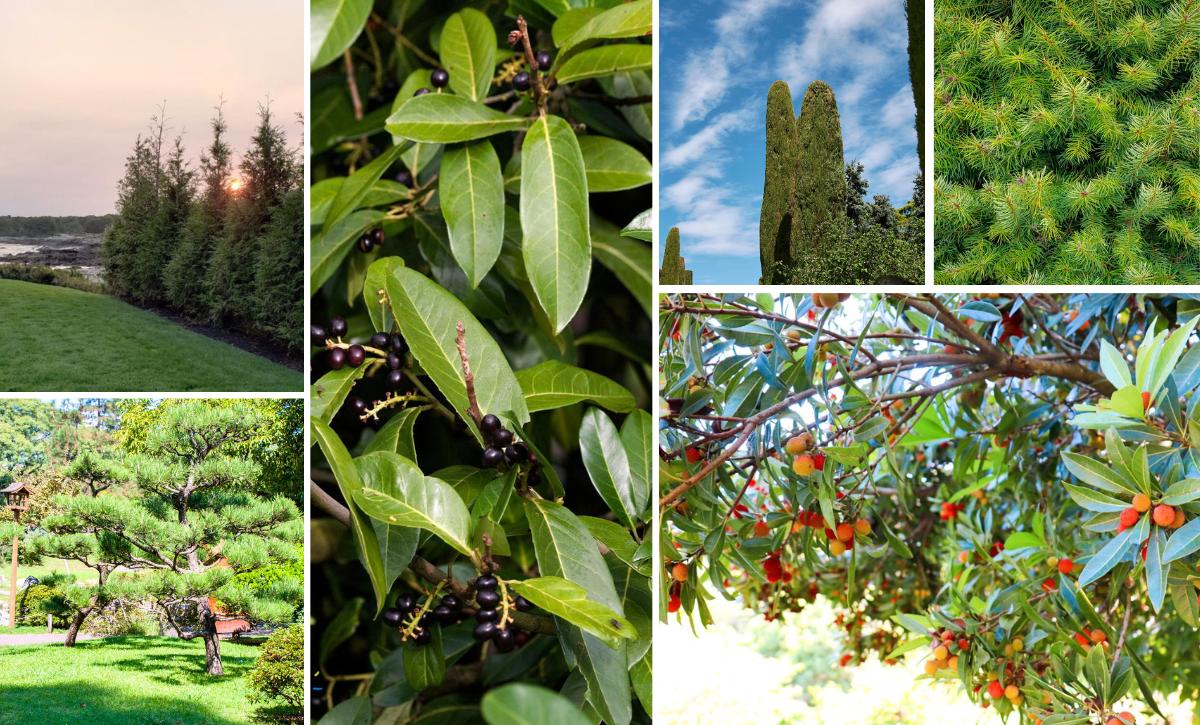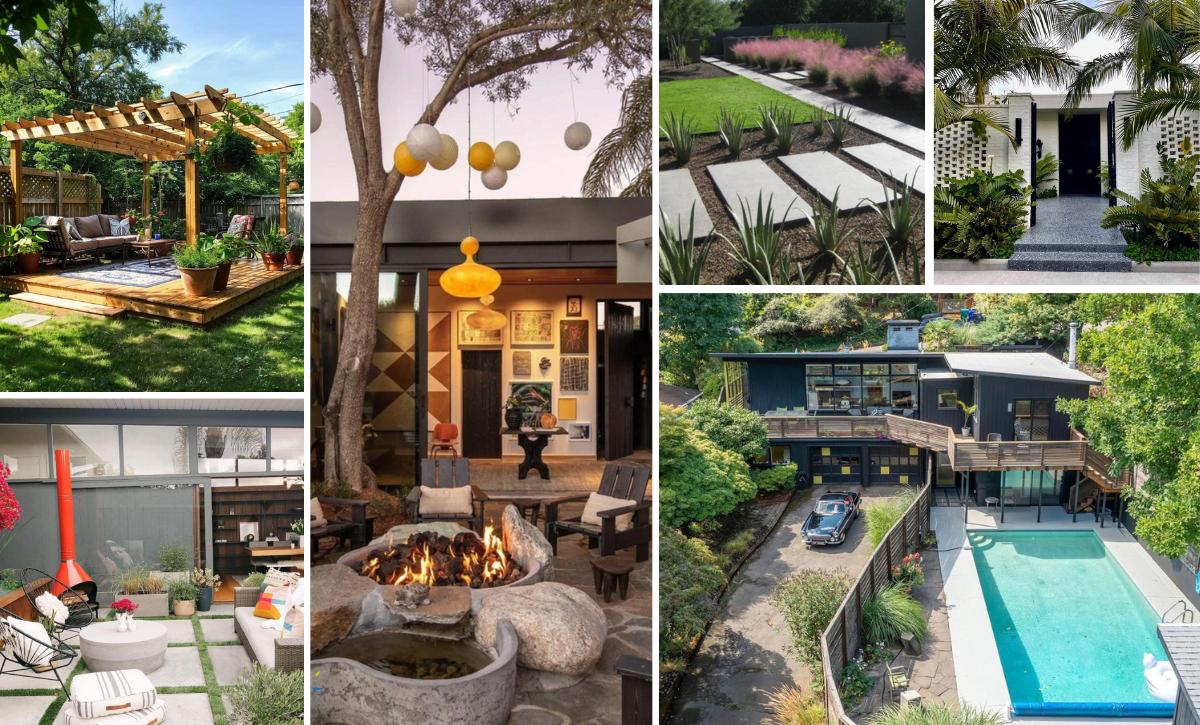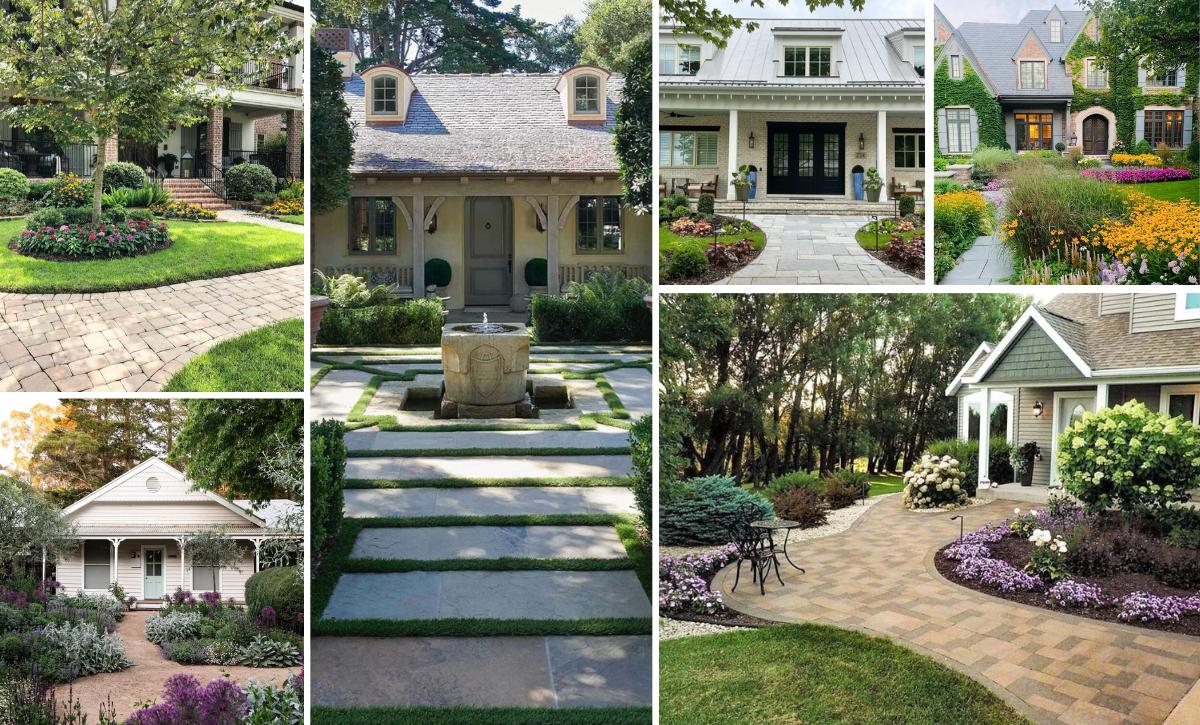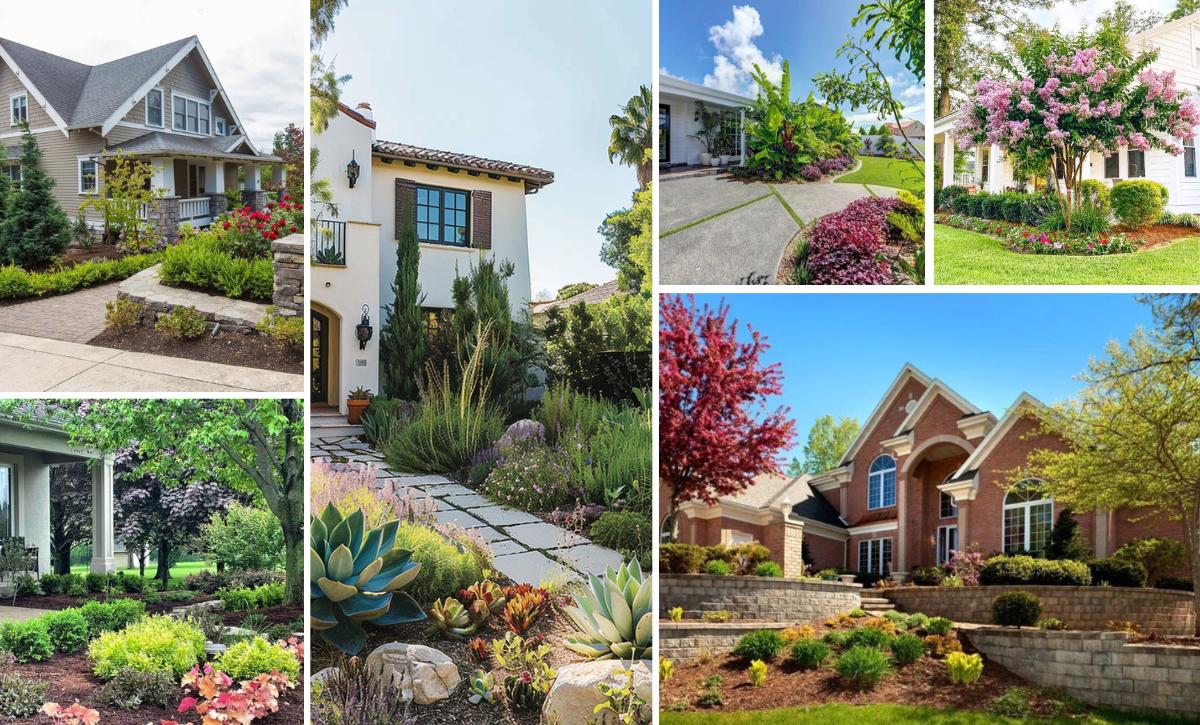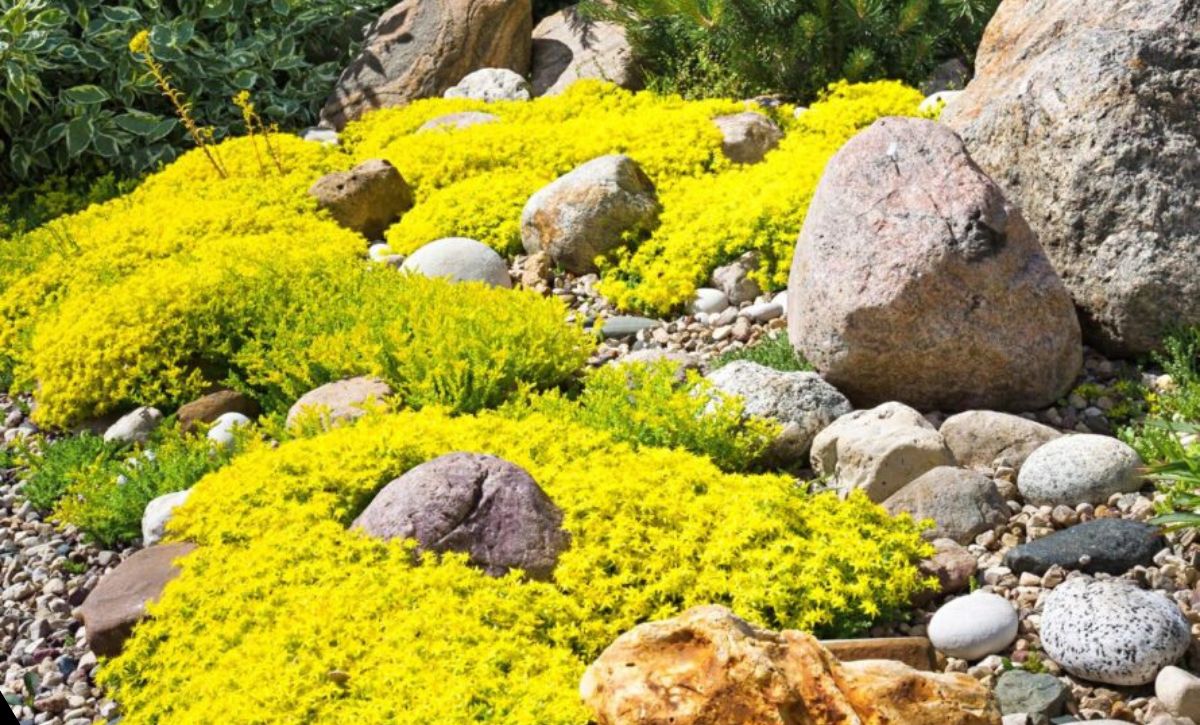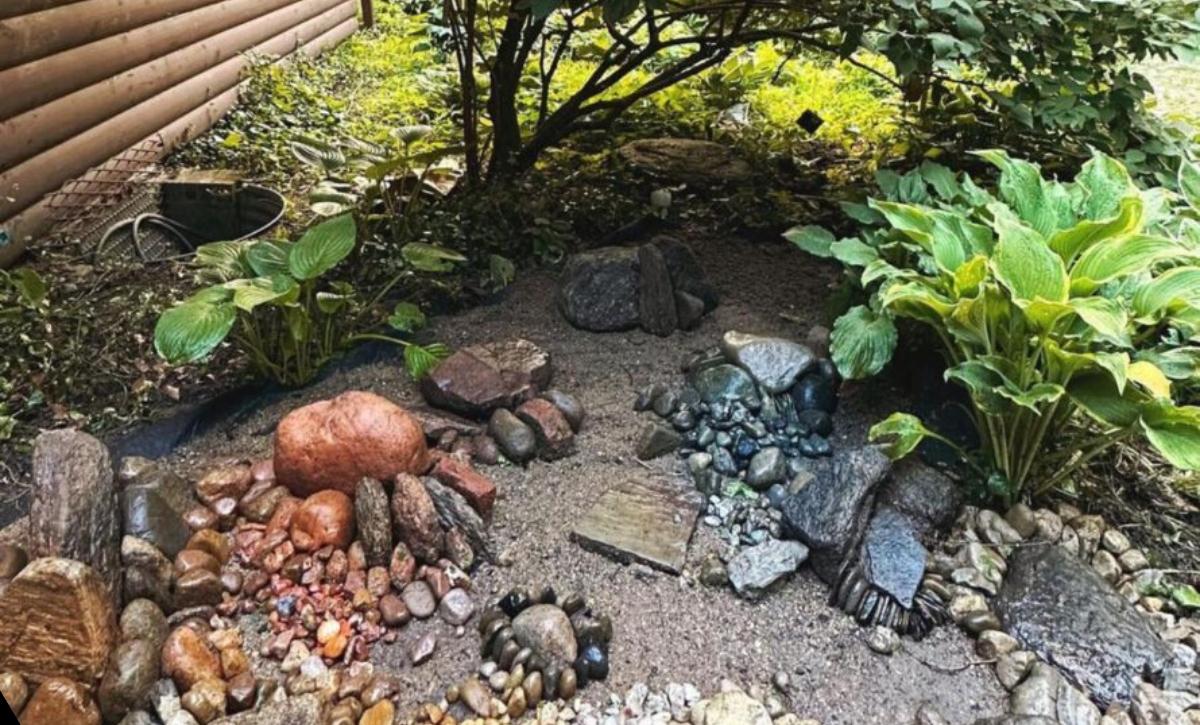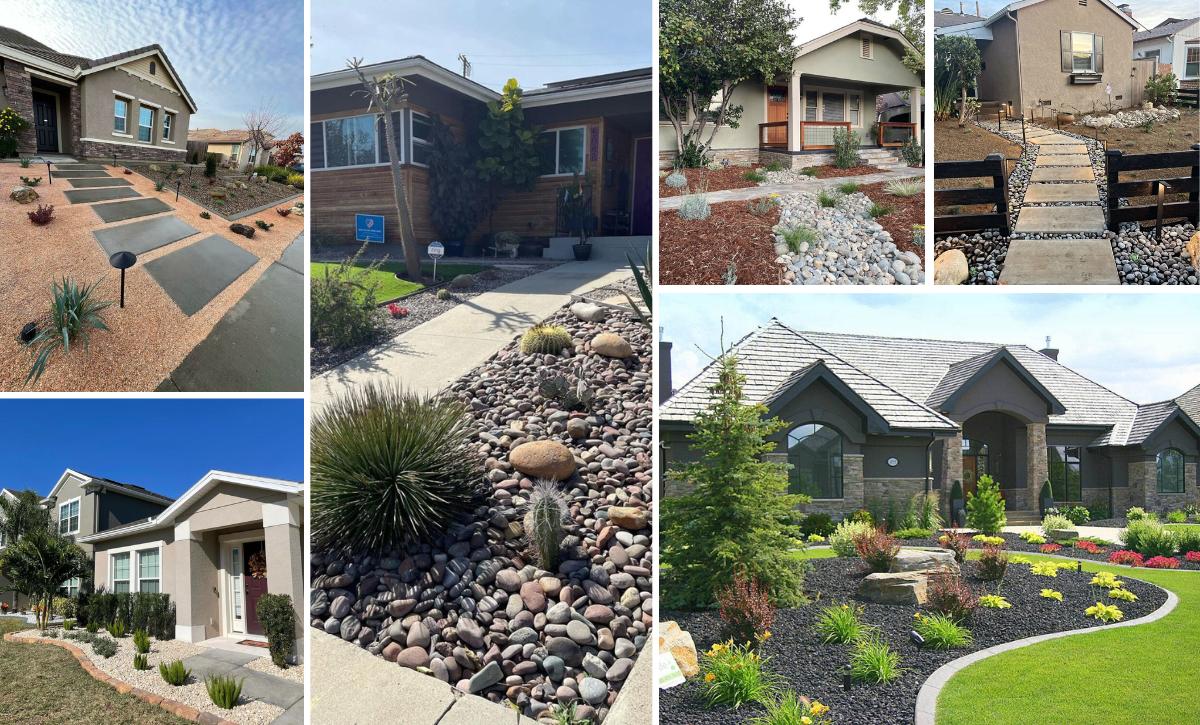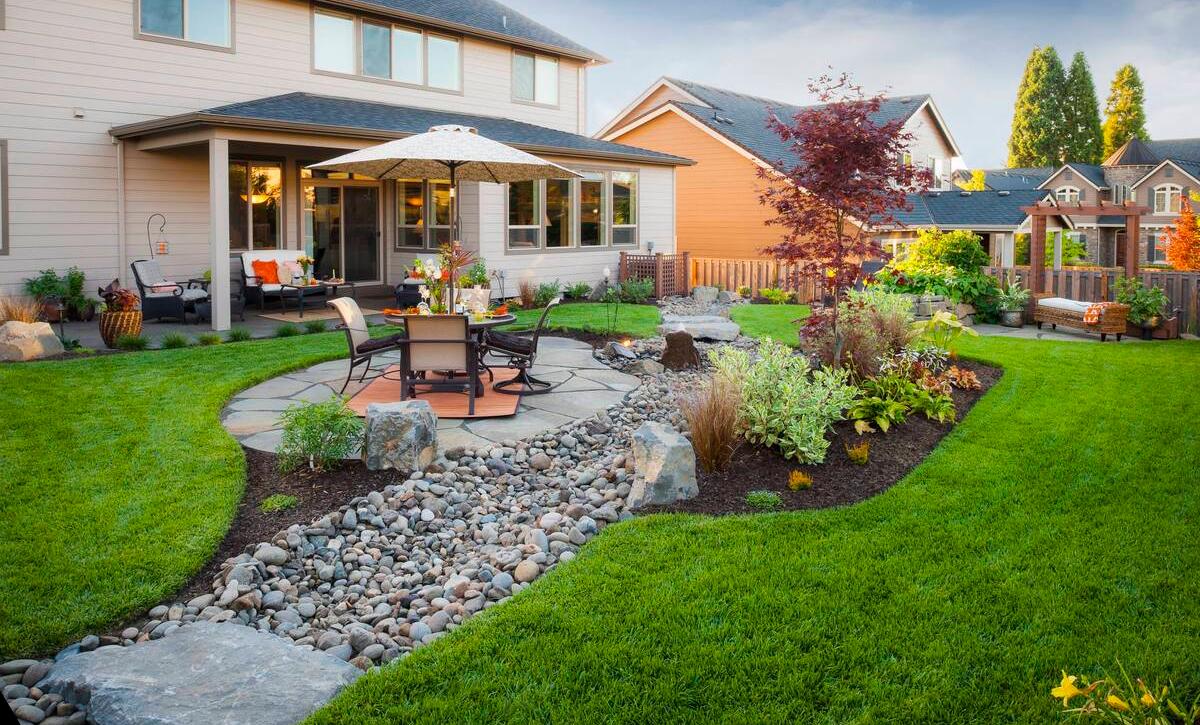If you plant a garden every year that looks great but it never measures up to your expectations, it may be time to look at layered landscaping.
Layered landscaping is the Ace in the pocket for many landscape designers. Layered landscaping ideas bring depth and color to any outdoor space.
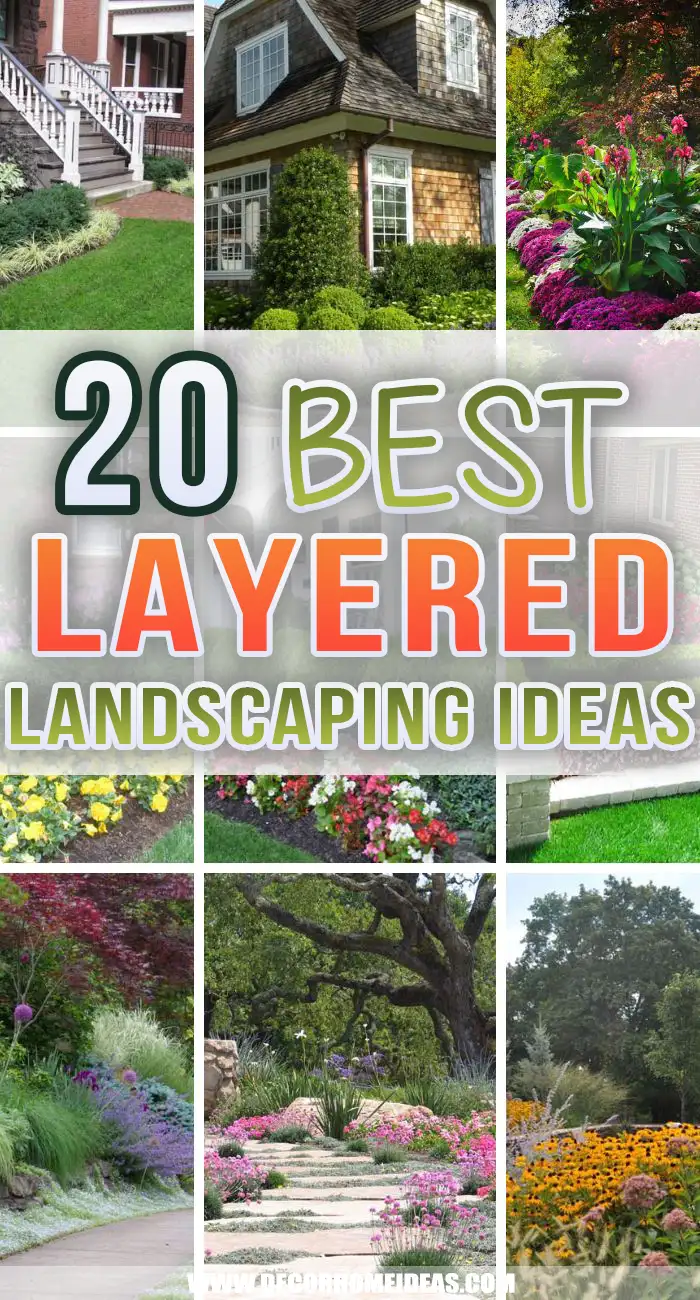
- What is layered landscaping?
It’s a technique for planting flowers and shrubs that brings different heights together to add a lush look to a garden.
- How do you design a layered garden?
Height and color are the two most important factors. You’re going to create a garden that mimics a class picture. The tallest plants go in the background layer. Ground cover or low-growing flowers go in the front. The middle can be a mix of shrubs, flowers, or ornamental grasses.
- How do you add height to landscape?
Add trees, arborvitae, shrubs or very tall flowers in the back of a garden bed. Container gardening can have this by adding tall flowers in the center of a pot.
Check out these layered landscaping ideas to get inspiration for your own designs.
1. Coastal Layered Landscape
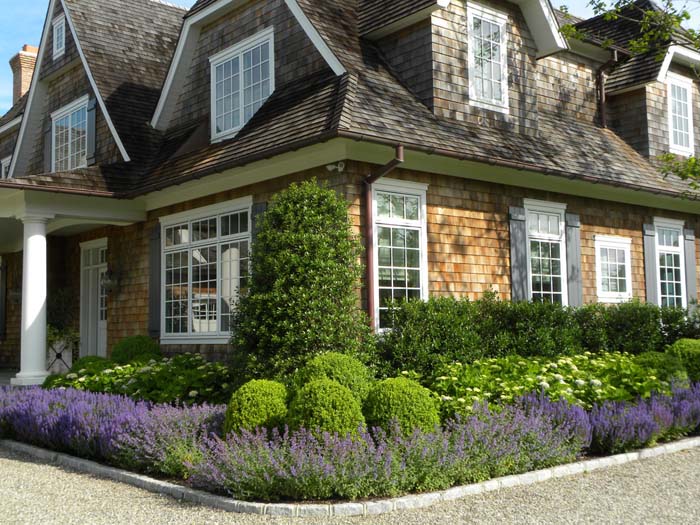
Even a coastal home that is plagued with sandy soil can have a layered landscape.
Ideas shown here include evergreen shrubs in the back and a sage plant theme in the front.
2. Layered Landscape Idea for a Small Yard
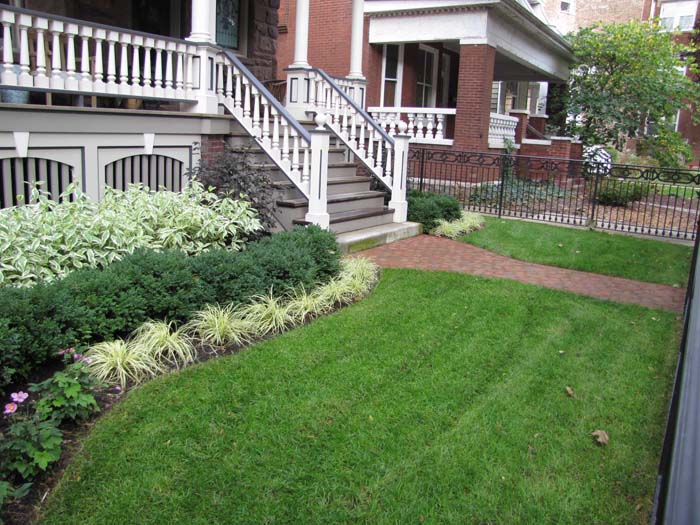
Expanding a layered garden in a small yard makes lawn care a breeze. A basic three layer garden shown here raises the curb appeal of this old house.
3. Work With the Entire View
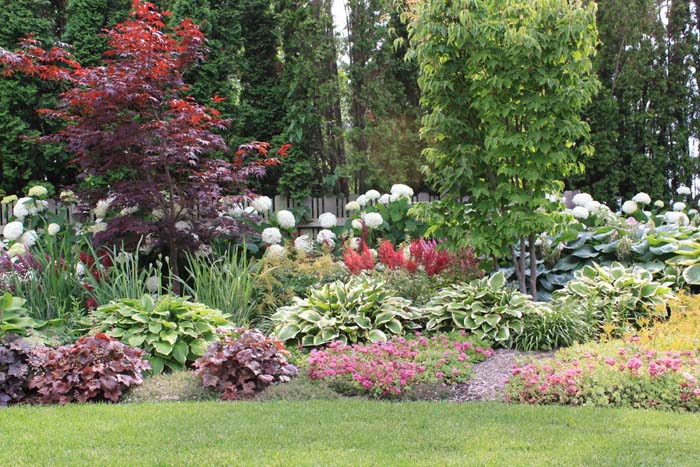
When it comes to building out your layered landscaping ideas, you may have a challenge with adding enough height to work with trees that are already established.
The arborvitae way in the back on the other side of the fence.
The solution here is to add medium-height trees and shrubs and taller white flowers that look like a ribbon that ties the layers together.
via Arcadia Gardens
4. Layered Landscape With Privacy and Balance
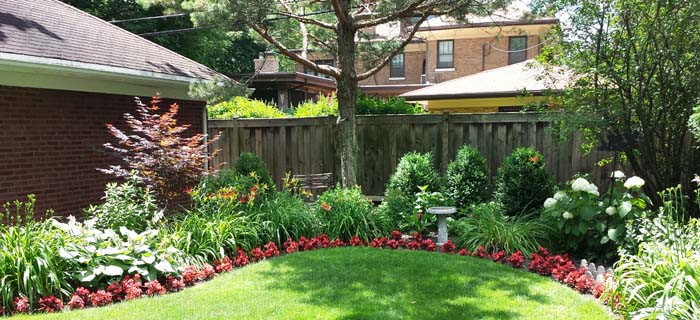
Landscape layering has challenges in finding ideas that create a uniform look without feeling forced.
A tall tree in the center of this garden and a tall shrub to the right created an imbalance. This is addressed by planting a Japanese maple tree on the left side and connecting the three plants with evergreen shrubs.
5. Layered Landscape Idea for a Border Garden
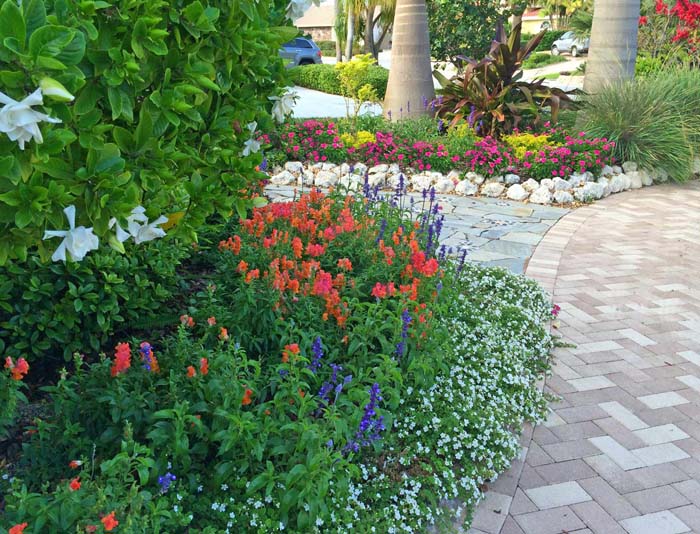
Flowering shrubs accentuate the height in this garden bed.
The garden bed in the background gets its height from palm trees and a tropical plant.
6. Layered Landscaping on a Slope
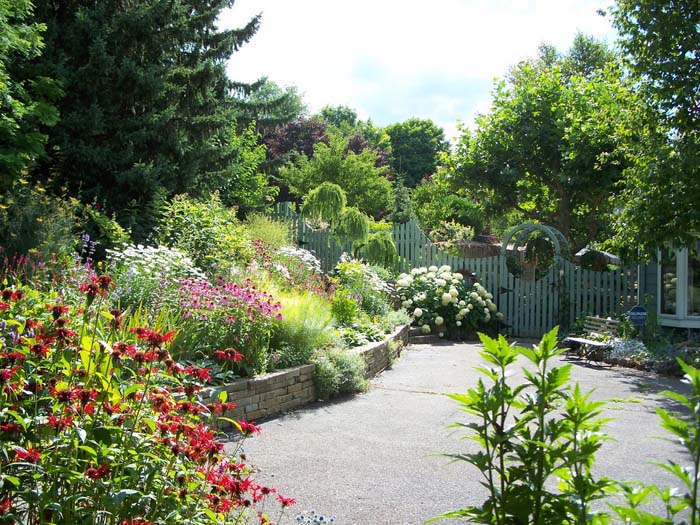
Building a raised garden bed with a retaining wall on the slope of this yard makes the patio look more like a courtyard.
Each plant is chosen carefully to add the proper height without much fuss.
7. Layered Landscape Works Vertically
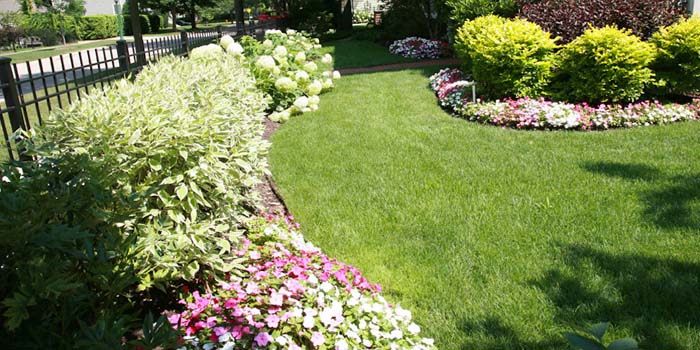
There’s a couple of layered landscaping ideas here. The garden bed in the far corner has a classic look.
The side next to the fence runs its layers vertically. That is, the height is in the center of the fence line, the middle and front layers drape off to the side, adding visual interest to anyone looking along the border of the lawn.
8. Hide The Porch Skirting with Layered Landscape
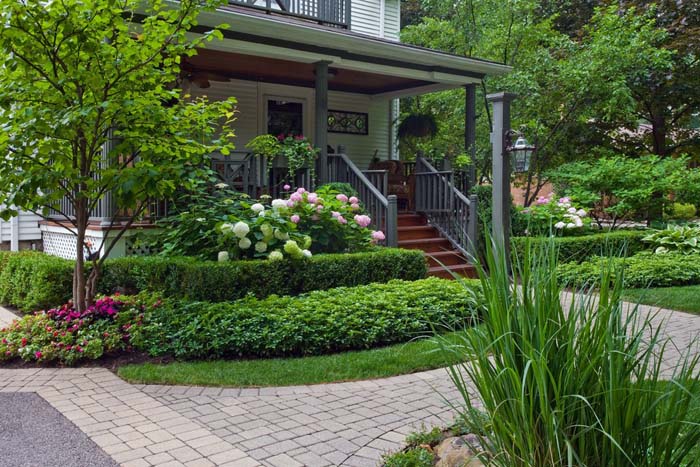
Adding perennials to your layered garden is a great idea for low maintenance landscaping.
While it’s common in layered gardens to use evergreen shrubs as the back layers, flowering shrubs can also be used.
9. Classic Layered Landscape Flower Bed
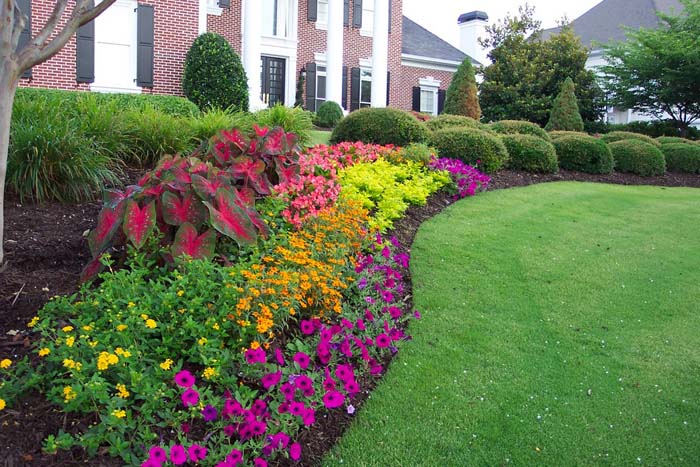
A common landscaping idea for larger garden beds is to plant an evergreen shrub in the back. It makes a garden border easier to maintain.
This layered landscape uses ribbons of color with coleus, marigolds, and petunias prominently displayed.
10. Layered Landscape Keeps Rows Intact
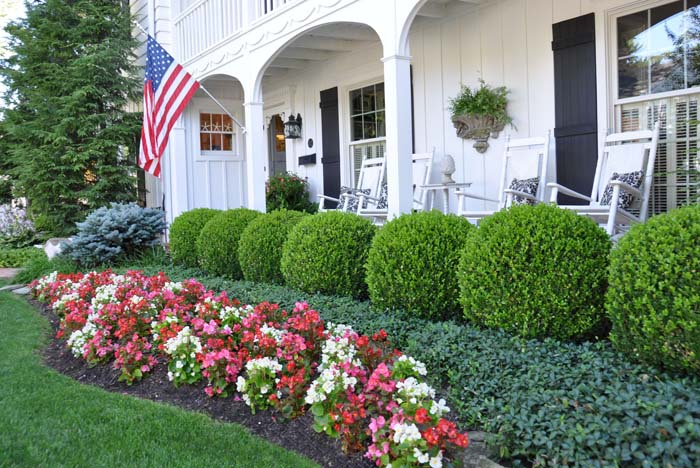
When it comes to landscape layering, you can interweave layers, or keep them separated.
The Boxwood shrubs used here build the background layer. They’ll be kept low enough to avoid blocking the view from the veranda. Wax begonias add bright color in the front.
via Barnes Nursery
11. A Rock Garden with a Layered Landscape
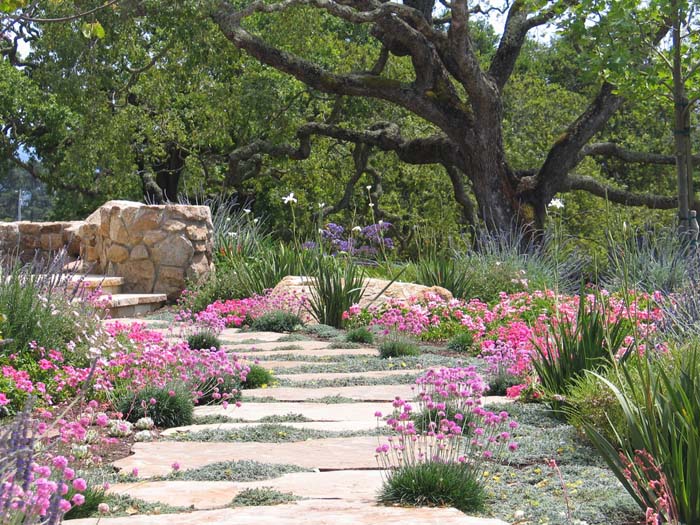
You can apply layered landscaping ideas in a rock garden. You build out away from the path, whether it’s flat or on a slope as seen here.
Use stepping stones as the path. Native plants flank each side. Ameria or Sea Thrift adds color. Silver Carpet is used as the front layer and to fill in the soil.
via Zeterre Landscape Architecture
12. Full Yard of Layered Landscaping
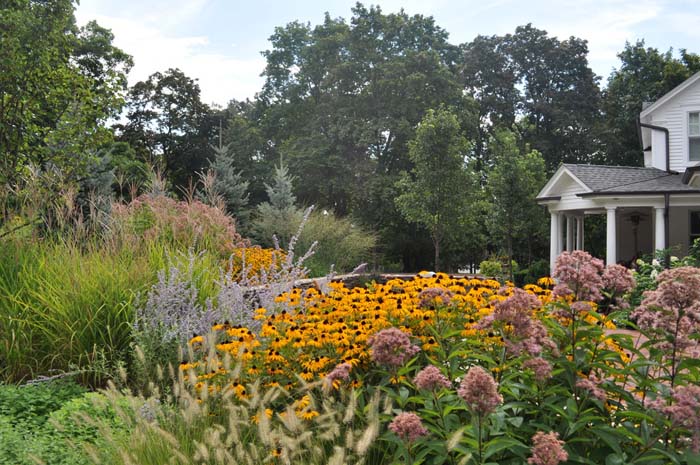
A rock wall separates the layers in this garden.
You can see how a grand collection of Black Eye Susans create bookends that meet at the wall.
13. Layered Landscape in a Pool’s Transitional Area
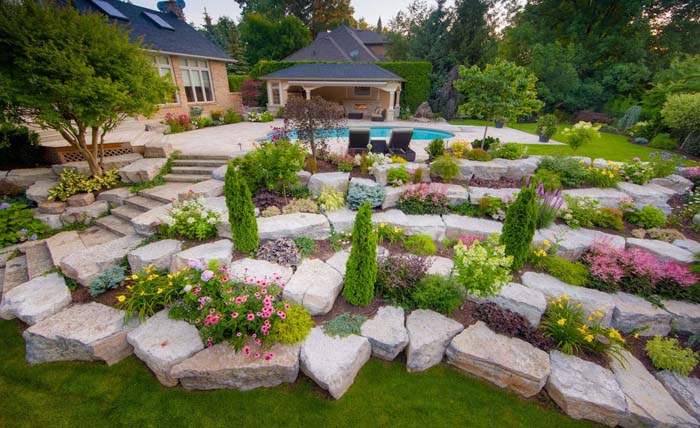
When you have to deal with a landscape that slopes, consider adding a rock garden.
By using stepping stones for layers, you’ll take care of problems with erosion and lawn care all in one easy landscaping idea.
14. Plant Coleus for a Low Maintenance Layered Landscape
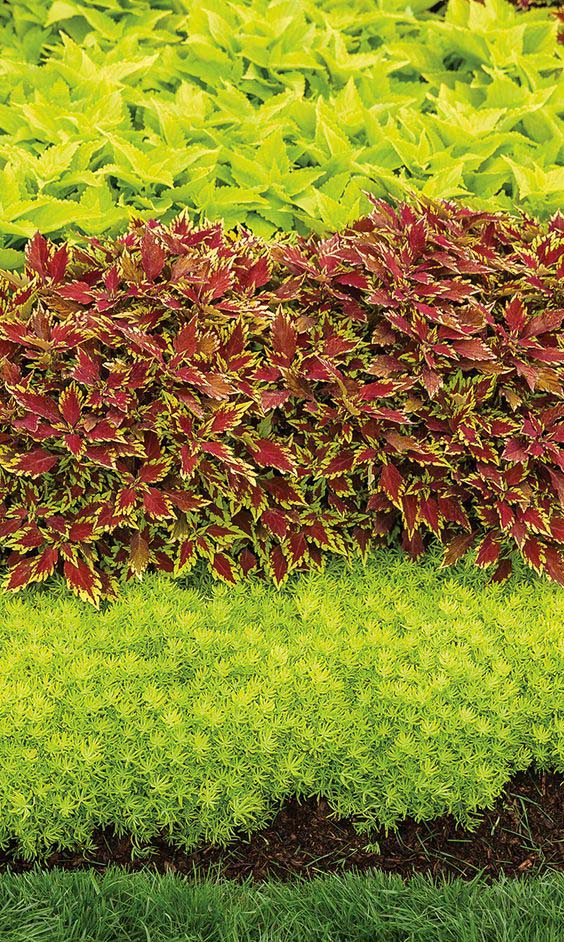
Create a low-maintenance layered garden using perennial bulbs. Most Coleus plants will thrive in both full sun and partial shade settings, making them ideal for borders that dart in and out of shady trees.
The Lime Time Coleus in the back grows to a height of three feet. The front layer is Stonecrop. The mid-layer is Grande ColorBlaze Apple Brandy Coleus. It works to tie together the yellow-green leaves of the outer two layers.
via Proven Winners
15. Mums Bring the Color to a Layered Landscape
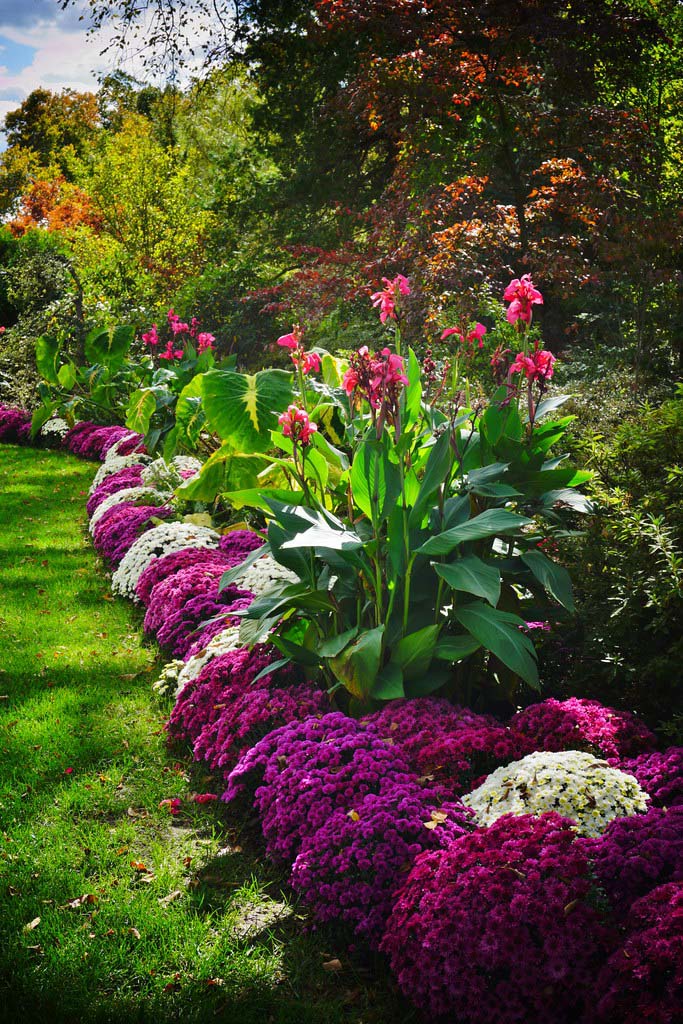
A garden border that covers the soil using a collection of mums.
Azaleas rise up in the middle, adding height and a unique touch to the side view of this garden bed. It’s a dramatic landscaping idea.
via Karl Gercens
16. Alternating Colors in a Garden Bed
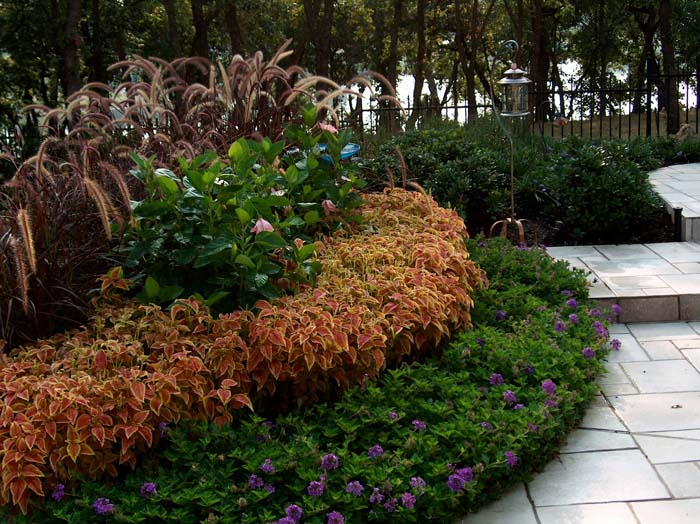
Alternating colors is another landscape layering technique. Flowering plants alternate with the Coleus in the middle and the Purple fountain grass in the background.
When the flowers drop in the fall, there will still be alternating layers of color.
17. Meticulous Garden Bed with Boxwood Layers
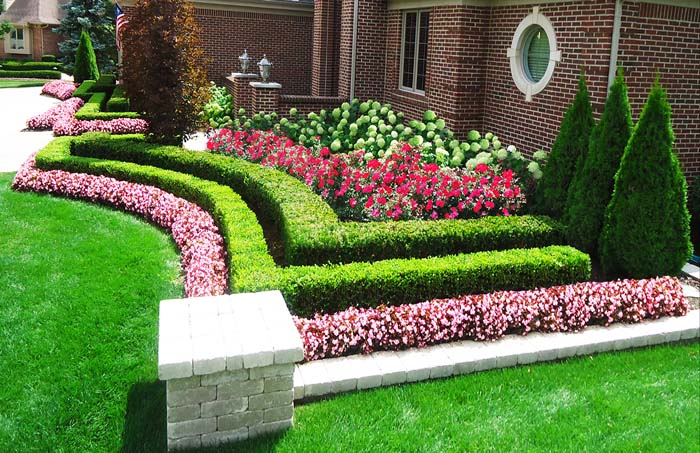
Formal landscaping demands plants that are easily pruned and hold their shape. Perennial flowering shrubs like hydrangeas in the back are easy to cut back whenever necessary.
Other ideas shown here are using two levels of boxwoods for the mid-layers and trees on the foundation’s corners. The white brick edging on the side simplifies lawn care.
18. Layered Landscaping Creates a Wild Look
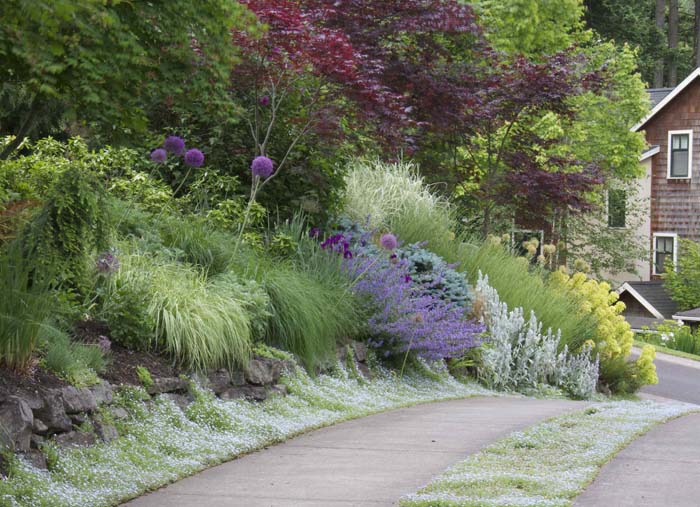
This layered landscape brings a lush look to this raised garden near the side of the road.
Trees form the canopy over some drought-tolerant plants such as sage, Giant allium, and Japanese forest grass. Using a ground cover such as white creeping thyme or Silver Falls Dichondra on both sides of the sidewalk adds to the vibe.
via Mosaic Gardens
19. Add Color In the Back With Flowering Shrubs
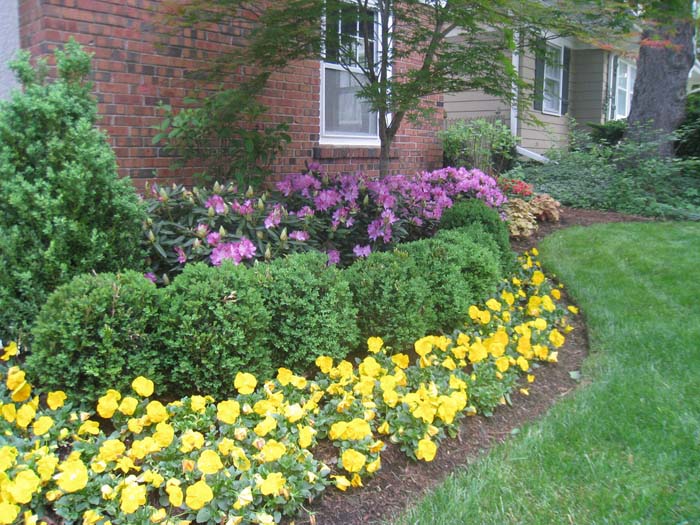
A layered garden border brings a professional look to any lawn. The owners used a small tree and rhododendrons in the back.
Boxwoods were added to the mid-layer. You can take your pick for any yellow flowering plant in the front, such as perennial yellow roses, wax begonias, or peonies.
20. Layered Landscape Brings Big Curb Appeal
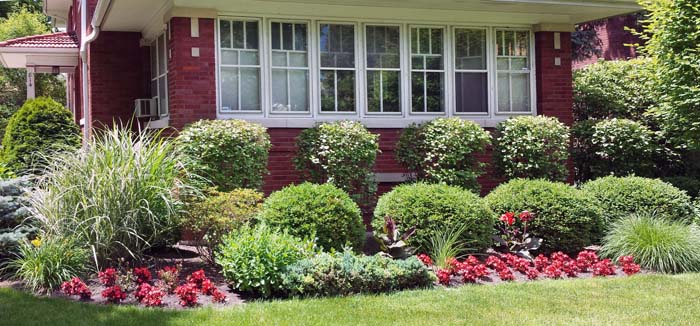
A small garden can look just as lush as any large landscape. Be sure and cover the foundation corners and keep the height of the background layer below the window sill level.
You don’t have to add trees. You can use ornamental grass such as Silver Grass or Dwarf Maiden Zebra Grass as shown in the right corner.
Add color to the foreground layer using a carpet flower like Dwarf Crepe Myrtle.

